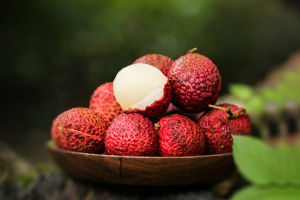A Global Brew
Coffee, one of the most popular drinks globally, has its quality and taste significantly influenced by its growing region.
Here are the top ten coffee-producing regions globally, each renowned for its unique flavor and cultivation practices:
1. Colombia:
Colombia is renowned for its high-quality Arabica coffee, with the country's high altitudes and mild climate contributing to its rich acidity and smooth taste. Colombian coffee is celebrated for its balanced flavor and enticing aroma, making it a favorite among coffee enthusiasts worldwide.
2. Brazil:
As the world's largest coffee producer, Brazil boasts vast and diverse coffee plantations. Brazilian coffee often features strong chocolate and nutty notes, with a full-bodied and deep taste. This versatility makes it ideal for both single-origin consumption and coffee blends.
3. Ethiopia:
Ethiopia is considered one of the birthplaces of coffee. Much of the coffee here is wild or organically grown, resulting in a complex flavor profile with rich fruit and floral aromas. Ethiopian coffee is known for its unique and varied tastes, reflecting the diverse microclimates and traditional cultivation methods.
4. Costa Rica:
Costa Rican coffee is prized for its refreshing acidity and rich chocolate undertones. The country's excellent coffee-growing environment, characterized by high altitudes and abundant rainfall, contributes to the high quality of its beans. Costa Rican coffee is known for its vibrant and well-balanced flavors.
5. Mexico:
Central and southern Mexico are home to numerous coffee plantations. Mexican coffee, which is primarily exported to the United States, is appreciated for its mild acidity and subtle chocolate and spice notes. The diverse climates and altitudes in Mexico allow for a range of unique coffee flavors.
6. Peru:
Peru, a South American country, produces coffee with an outstanding taste that is exported worldwide. Peruvian coffee is known for its bright acidity, medium body, and flavor profile that often includes citrus, chocolate, and nutty notes.
The diverse growing regions, from high-altitude Andean areas to the Amazon rainforest, contribute to the complexity of Peruvian coffee.
7. Ecuador:
Ecuador's coffee, mostly Arabica, is grown in the high-altitude and rainy Andes Mountains. The coffee from this region often has bright acidity and a variety of fruity aromas, making it suitable for coffee lovers who enjoy complex and nuanced flavors.
8. Vietnam:
Introduced by the French in 1857, coffee cultivation in Vietnam has flourished due to the country's climate and fertile land. Vietnam is now one of the largest coffee producers in the world, primarily known for its robust coffee.
Vietnamese coffee is often characterized by its strong, bold flavor, making it a popular choice for espresso blends and traditional Vietnamese coffee preparations.
9. India:
The coffee from the regions of Karnataka, Kerala, and Tamil Nadu in India is renowned for its rich taste and deep aroma. Indian coffee, often produced from single-estate plantations, is known for its smooth body and unique spicy notes. The traditional shade-grown methods used in India contribute to the distinct characteristics of its coffee.
10. Honduras:
Honduras offers the perfect climate and temperature for coffee cultivation, resulting in beans with excellent taste and flavor.
Coffee is a major cash crop in Honduras, and coffee is known for its bright acidity, medium body, and flavor notes that can include tropical fruit, chocolate, and nuts. Honduran coffee has gained recognition for its quality and is increasingly popular among specialty coffee markets.
Coffee from these countries and regions is favored and recognized by coffee lovers worldwide for its unique growing environments, meticulous planting and processing techniques, and unwavering pursuit of quality.
Whether you prefer a bright and fruity coffee or a rich and full-bodied cup, these regions offer a rich variety of choices worth exploring.


